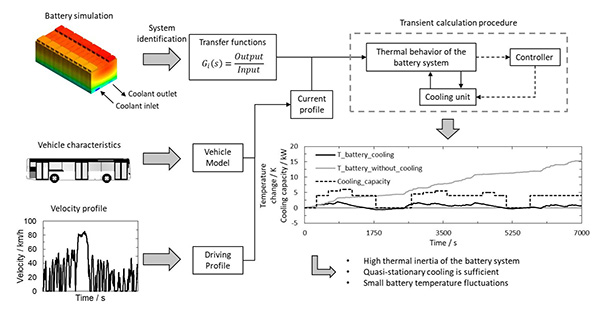In the realm of electric vehicles (EV) and portable electronic devices, the quest for efficient thermal management systems has emerged as a paramount concern. As the demand for electric vehicles continues to soar, the focus on heat management strategies for batteries has intensified. The profound impact of temperature on battery performance and longevity cannot be overstated. Let’s delve into the intricacies of thermal management systems and their pivotal role in maximizing battery life and device performance.

Understanding Thermal Management Systems
A thermal management system for EVs serves as the linchpin in regulating the temperature of electronic devices, particularly batteries. Comprising intricate components such as temperature sensors, cooling mechanisms, and controllers, these systems function harmoniously to maintain the optimal temperature range for device efficiency and durability.
The Impact of Temperature on Battery Life
Temperature fluctuations wield a profound influence on battery lifespan and performance. The ideal temperature range for batteries typically hovers between 20°C to 25°C. Deviations from this range can trigger adverse effects, including accelerated degradation and reduced runtime.
- High Temperatures: Excessive heat accelerates battery degradation, curtailing its longevity and compromising performance.
- Low Temperatures: Suboptimal temperatures diminish battery capacity and prolong charging times, culminating in reduced runtime.

Components of a Thermal Management System
A well-designed electric vehicle thermal management system integrates several key components, each pivotal in orchestrating effective temperature regulation:
- Temperature Sensor: This component serves as the watchdog, constantly monitoring the device’s temperature and relaying crucial data to the controller.
- Cooling Mechanism: From air cooling to liquid cooling and phase-change cooling, diverse mechanisms are deployed to dissipate excess heat and maintain optimal temperatures.
- Controller: Acting as the nerve center, the controller interprets signals from the temperature sensor and orchestrates the activation of the cooling mechanism when deviations from the optimal range are detected.
How Thermal Management Systems Operate
Thermal management systems function via a meticulously choreographed process:
- The temperature sensor diligently monitors the device’s temperature.
- The controller springs into action upon detecting deviations from the optimal range, activating the appropriate cooling mechanism.
- Air cooling, liquid cooling, or phase-change cooling mechanisms are then deployed to restore the device to its ideal temperature range.
The Crucial Role of Installation and Maintenance
Ensuring the efficacy of battery thermal management systems hinges upon meticulous installation and consistent maintenance protocols. Accumulation of dust and debris within cooling mechanisms can impede functionality, underscoring the importance of periodic cleaning and upkeep.
- Proper Installation: Adherence to manufacturer guidelines during installation mitigates the risk of diminished efficacy and potential damage to the device.
- Routine Maintenance: Regular cleaning and upkeep are imperative to preserve optimal system functionality and longevity.
Thermal Management in Electric Vehicles: A Paradigm Shift
In electric vehicles, thermal management assumes heightened significance, profoundly impacting battery performance and lifespan. Sophisticated thermal management systems are integral to sustaining optimal battery conditions, thereby maximizing efficiency and longevity.
Anticipating Future Trends
As technological advancements continue to unfurl, the landscape of thermal management systems is poised for transformative evolution. Innovations such as nanofluidic cooling and AI integration herald a new era of efficiency and precision in temperature regulation.
The Anatomy of Battery Thermal Management
The composition of a battery thermal management system typically encompasses:
- Battery Heat Sink: Facilitates heat dissipation, ensuring optimal battery temperatures.
- Temperature Sensor: Detects battery temperature variations, transmitting data to the temperature controller.
- Temperature Controller: Monitors and regulates battery temperature, activating cooling systems as needed.
- Cooling System: Utilizes fans or liquid cooling mechanisms to mitigate battery temperature.
- Protection System: Safeguards against overcharging and overdischarging, preserving battery integrity.
Na závěr, the imperative of thermal management systems in preserving battery life and optimizing device performance cannot be overstated. As technology marches forward, embracing these systems emerges as a quintessential strategy for mastering battery longevity and securing optimal device functionality.



